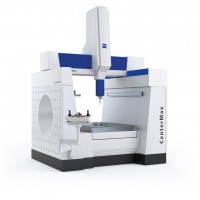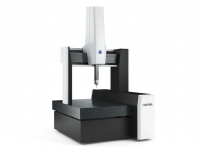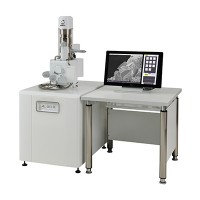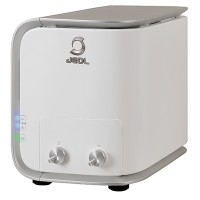-
JSM-7800F Schottky Field Emission Scanning Electron Microscope
- Post on 27-03-2019 02:26:51 AM - 3199 Views
-
The newly-developed Super Hybrid Lens (SHL) is used to achieve the next-generation high-resolution SEM, without sacrificing operability. The adoption of the Schottky type electron gun delivers stable analysis with large probe current.
High resolution observation using the Super Hybrid Lens (SHL)
The objective lens is a Super Hybrid Lens (SHL), which consists of an electrostatic magnetic field overlapped with an electrostatic electric field. Reducing the chromatic and spherical aberrations improves the resolution, especially at low accelerating voltages. The SHL does not exert magnetic field influences on the specimen, so observations of magnetic materials and EBSD analysis can be performed without difficulty.Energy selection at low accelerating voltages
An energy filter is mounted directly below the upper electron detector (UED), so energy selection is possible. Secondary electrons and backscattered electrons can be selected accurately, even at low accelerating voltages, allowing composition observation of the top surface of the specimen using a backscattered electron image at low accelerating voltages.Top surface imaging using Gentle Beam
By applying a bias voltage to the specimen (GB), the speed of the incident electrons is reduced and the speed of the released electrons is increased. This allows high-resolution images with a good signal-to-noise ratio to be acquired even with low specimen exposure energies. If GB mode is used, which allows a higher bias voltage to be applied, even higher-resolution observations can be made even at specimen exposure energies of just a few tens of eV.Acquisition of all information using multiple detectors
The JSM-7800F incorporates 4 types of detectors, including an upper electron detector (UED), upper secondary electron detector (USD), backscattered electron detector (BED), and a lower electron detector (LED). For the UED, the secondary electron and backscattered electron dose can be changed according to the filter voltage, making it possible to select the electron energy. The USD detects the low-energy electrons that bounce off the filter. With the BED, channeling contrast can be clearly observed by detecting the low-angle backscattered electrons. The LED enables acquisition of images with a 3-dimensional appearance, including the surface roughness information from the illumination effects.Application examples
- Observation at low accelerating voltage
By the Gentle Beam (GB) method, observation from at the specimen exposure energy of 10 eV is possible. The surface of graphene sheet the thickness of just one atom is observable with the specimen exposure energy being set 80 eV.

Specimen: Graphene ( specimen exposure energies: 80eV) - Energy selection
With BE image (left) and SE image (right) simultaneously being obtained by UED and USD, precise interpretation of images is possible. Segregation between gold particles and TiO2, not obvious by SE image which contrast depends mainly on the topography, becomes clear by BE image, where gold particles become brighter because of its higher mean atomic number.BE image 
SE image 
Spesimen: gold supported TiO2 catalyst (2kV) - Observation using GBSH
The GBSH method applies a negative voltage to a specimen. With the aberration being reduced, high resolution images are produced. Clear observation of mesoporous silica is realized.

Specimen: Mesoporous silica (specimen exposure energy: 1keV) - Observation of magnetic materials
SHL does not form magnetic field around a specimen. Threfore high resolution observation of magnetic materials, and even at low specimen exposure energies, can be performed without difficulty.

Specimen: Magnetite nano particles (specimen exposure energy: 1keV) - EBSD can be performed comfortably, since SHL does not exert magnetic field influences on the specimen. IPF Map produces high precision crystal orientation analysis.

Number of points: 118585
Dimensions:
X Max: 80.00 microns, Y Max: 79.89 microns
Step: 0.25 microns
Phases: Nd2Fe14B
Example of EBSD patternND

TD

RD


-

Unparalleled Stability...
27-03-2019 01:38:04 AM -

The Reference Machine in...
27-03-2019 01:28:20 AM -

SMALL PARTS COUNTER U-60
27-03-2019 01:04:31 AM
NGOC MINH ISE CO.,LTD
- HCMC Office: Block A, Lever 2, Linh Trung Building, No 6-8, Road no 16, Linh Trung Ward, Thu Duc City, HCMC.
- Head Quaters: 427 Le Dai Hanh, Ward 11, District 11, HCM City.
- Hanoi Office: 156A Quan Thanh Str., Ba Dinh Dist., Hanoi City.
- Phone: +84-28-66865303
- Mobile: +84 982 427 168
- Email: dung@ngocminh-ise.com
- Website: http://ngocminh-ise.com
- HCMC Office: Block A, Lever 2, Linh Trung Building, No 6-8, Road no 16, Linh Trung Ward, Thu Duc City, HCMC.
- Head Quaters: 427 Le Dai Hanh, Ward 11, District 11, HCM City.
- Hanoi Office: 156A Quan Thanh Str., Ba Dinh Dist., Hanoi City.
- Phone: +84-28-66865303
- Mobile: +84 982 427 168
- Email: dung@ngocminh-ise.com
- Website: http://ngocminh-ise.com
You did not use the site, Click here to remain logged. Timeout: 60 second














